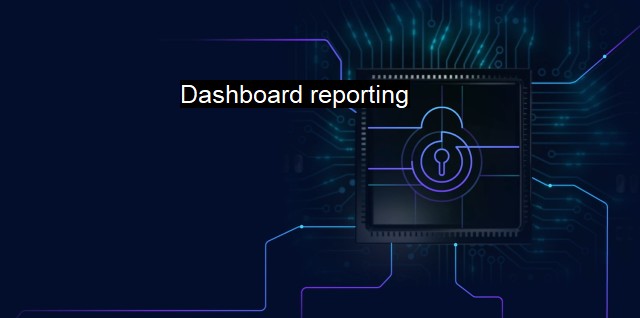What is Dashboard reporting?
Insights Unlocked: Protect your Business with Dashboard Reporting for a Robust Cybersecurity and Antivirus Monitoring Strategy
Dashboard reporting is a cornerstone in the field of cybersecurity and antivirus program management. This aspect of logical and digital armor fortification is typically cultivated through technology that promotes data visualization together with accentuated insights. As such, conceptually, dashboard reporting is the visualization of information and insights from the accumulated data within a system. This ingenious strategy account for taking vast amounts of data and transposing them into axiomatic bits of contents, displayed in an intuitive manner which allows experts and non-experts, stakeholders and users to interpret the reports meaning readily.In the context of cybersecurity and antivirus software, dashboard reporting plays an imperative function. Primarily, it allows for real-time monitoring of network systems and digital devices to identify potential threats and actualized attacks. Given any system's vulnerability to a multitude of threats, antivirus software often operates under a distinct radar that focuses on threat and malware detection. As such, this software periodically performs system sweeps, constantly monitoring crossings within the system, meticulously scanning individual levels and files for potential threats, and collecting associated data.
This collection of varied data exponentially increases in volume as continuous monitoring persists. Consequently, to process, analyze, and make sense of these amassed data, dashboard reporting is used extensively within the context of antivirus software. Working intricately like a cockpit of proficient controls, the dashboard report operates as a unified source granting professionals the ease of use, whilst providing them with information that can be analyzed and utilized effectively in developing strategies; measures that would be sufficient in halting the impending threat in its tracks thereby enhancing a system’s security.
Beyond monitoring and detecting actual threats, dashboard reporting also serves a critical role in informed decision-making when it comes to improving cybersecurity infrastructure. Cybersecurity frameworks often involve multifaceted components, with each element having its unique role and impact on the overall efficacy of a security system. By drawing together data from each of these constituents, a dashboard provides condensed insights to management regarding system status, postulating real-time information which includes aspects about vulnerabilities, detected threats, and the performance levels of the antivirus software.
Further, specific values extracted from a rich data podium contextually also include trends and patterns about threats affecting a system. Cybersecurity professionals tap into this database to discern threat patterns- maybe an increase in malware types or a clustering of network attacks- they analyze unusual sequels into reports, thereby strategizing for the future by countering potential threats even before they occur. Therefore, antivirus dashboards do not only represent an extension of program control but are central components for efficiently controlling respective software applications.
In a perennially evolving digital landscape studded with myriad cybersecurity professionals, having rudimentary strategic countermeasures in effect is not commensurate. Dashboard reporting accentuates extensive database collation with sophisticated analytical capabilities enabling custom comprehensive reports, impressive data charts and accessible service metrics, all featuring data-driven decision making, considerable resource management, and efficiency optimization in real-time.
It is within this dynamic convergence of technology and strategy that a significant triumph of cyber security mediation lies. The antivirus software armed with dashboard capabilities empowers organizations in precisely depicting sophisticated and impending threats whilst augmenting the abstraction process by way of systematic group reporting. dashboard reports compound our capacity to oversee cyber threats whilst perpetuating strengthened coverage and secure environments.

Dashboard reporting FAQs
What is dashboard reporting in the context of cybersecurity and antivirus?
Dashboard reporting in the context of cybersecurity and antivirus refers to a visual representation of key performance indicators (KPIs) and metrics related to the security of an organization's network and endpoints. It provides an overview of security incidents, threat detection rates, and the overall security posture of an organization.What are the benefits of dashboard reporting for cybersecurity and antivirus?
Dashboard reporting for cybersecurity and antivirus provides several benefits, including improved situational awareness, better decision-making capabilities, and enhanced communication among stakeholders. It also helps to identify areas of improvement and track the effectiveness of security measures over time.What metrics should be included in a dashboard report for cybersecurity and antivirus?
The metrics included in a dashboard report for cybersecurity and antivirus will depend on the specific needs of the organization. However, some common metrics may include the number of security incidents, the percentage of threats detected and blocked, the time to resolve security incidents, and the overall risk score.How often should a dashboard report for cybersecurity and antivirus be updated?
The frequency of updates for a dashboard report for cybersecurity and antivirus will depend on the needs of the organization. However, it is recommended to update the dashboard report at least once a week to ensure that stakeholders receive timely and relevant information. In some cases, organizations may require more frequent updates to address specific security concerns.| | A | | | B | | | C | | | D | | | E | | | F | | | G | | | H | | | I | | | J | | | K | | | L | | | M | |
| | N | | | O | | | P | | | Q | | | R | | | S | | | T | | | U | | | V | | | W | | | X | | | Y | | | Z | |
| | 1 | | | 2 | | | 3 | | | 4 | | | 7 | | | 8 | | |||||||